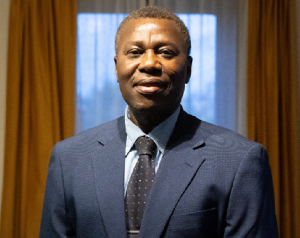; What Everybody Needs to Know?
In recent times, especially in the Ghanaian media, the debate has been ongoing with regard to the uneven development in Ghana. A lot of this debate has been centred particularly on the developmental gap between the north and the south of Ghana as well as between rural and urban Ghana. The rural-urban development gap debate basically underscores the point that every part of Ghana has both urban and rural communities. For example, Greater Accra, the capital and most “industrialised” city in Ghana, has its fair share of rural and urban communities. The second part of the debate is the north-south development gap of Ghana. Undoubtedly, there is also, national consensus over the disproportionate development gap between northern and southern Ghana. This article seeks to contribute to the debate on the latter. What seems to be the point of disagreement over the development gap between Northern Ghana and Southern Ghana is the major cause or causes? Some Ghanaians especially southerners believe the major cause of the development gap has to do largely with “protracted chieftaincy and ethnic conflicts as well as the ineptitude of northerners and their educated elite” not returning “home” to contribute to their quota to the development of the north. Another school of thought traces the development lag to structural issues embedded in a deliberate colonial policy and legacy against the northern part of Ghana. This view is mostly championed by the people of the north and their educated elite.
But to start with, I believe a lot of this debate has not enhanced the understanding of most Ghanaians about the issues involved. What I believe this ongoing debate has not focused on, is to make the debate assume a national character with a national direction and the way forward. I again believe the debate has largely been waged on the hills of one problem or the other emanating from northern Ghana and the ramifications of that problem for the nation as a whole. It is the strongest belief of this writer that recent developments in the political discourse and landscape of Ghana provides the greatest opportunity for this national debate to be waged with the ultimate objective of building a national consensus on the way forward.
The Colonial Policy and Legacy It is an undeniable fact that at independence, there was a huge development gap between northern and southern Ghana. Since then, successive governments have done their bit to bridge this gap. However, the fact still remains that 52 years after Independence, attempts at bridging this gap appears a mirage. It is the conviction of this article that the uneven development between the north and the south of Ghana are structural issues emanating largely from a colonial policy. Indeed, what is this colonial policy and legacy? Governor Sir F.M Hodgson declared that “for the present I therefore cannot too strongly urge the employment of all available resources of the government upon the development of the country south of Kintampo. I would not at present spend upon the northern territories a single penny more than is necessary for their suitable administration and the encouragement of the transit trade. The Northern Territories were therefore deliberately left out of development only to be dealt with in future years.
In 1912, a decade later, Governor Thornburn reiterated this policy: “until the Colony and Ashanti have been thoroughly developed, the Northern Territories must be content to await their turn and any extensive programmes designed to render the area more accessible, must be suffered to stand over for a long time to come.” Subsequently, by the 1920s, the commissioner for the northern territories in his annual report described the northern people as “amiable but backward people, useful as soldiers, policemen and labourers in the mines and cocoa farms, in short fit only to be hewers of wood and drawers of water for their brothers in the Colony and Ashanti.”
These facts of the colonial policy and legacy do not even take into account the huge human capital northern Ghana suffered seriously under slavery. It is also abundantly clear that northern Ghana was negatively and deliberately discriminated against by the colonial powers (Britain) in its share of development in Ghana; be it human, natural, social, cultural and so forth. The structural issues this policy mainly created for people of northern Ghana descent was to make them remain uneducated, thus, really accomplishing the goal of making them hewers of wood and drawers of water, a fate northerners have suffered from the colonial period until now. However, what this colonial policy and legacy facilitated most was the massive recruitment of northerners into the cocoa farms and mines of southern Ghana. Students of Ghana’s political history will recall that Ghana in the 1920s was the largest producer of cocoa in the world especially under the Guggisberg regime. The railway system was deliberately built by the colonial master mainly within the “Golden Triangle”, simply because of the deposits of abundant minerals. A cursory observation will tell any objective Ghanaian that most northerners were employed to work underground in these mines. The fact remains that northerners continued and continue to work in the cocoa farms and mines of the south in present day Ghana. Interestingly, cocoa and the mining sectors still remain the major revenue earnings for Ghana. The point that needs to be made is that since the days of the colonial master to date, northerners have largely contributed to the growth of Ghana. I am yet to hear any of these debates do a critical examination of these dynamics. What this simply means is that a good number of northerners who worked and are still working in the cocoa farms and mines have greatly supported the development of the south than the north. Indeed, a survey in the cocoa producing regions of Ghana will reveal that most northerners are caretakers of cocoa farms. The irony is that when it comes to scholarship schemes for children of cocoa farmers; it will be interesting to know how many children of these caretaker farmers who labour in these cocoa farms are sponsored? What is worse is that available researches on child labour in cocoa growing areas of Ghana suggest that most of these children are from northern Ghana. The simple reason is that these caretakers continuously have their children and that of their relatives from northern Ghana migrating to join them in these cocoa farms. Why is this case? The colonial policy is the cause.
Another equally structural impediment of this policy and legacy is that, it facilitated most northerners to be recruited as labourers in most government institutions. The University of Ghana, chop bars and the streets of our major cities clearly paint this picture vividly. The menial jobs are mostly occupied by people of the north. Indeed, the records suggest that J.H Alhassan, was the first northerner to graduate from the University of Ghana in 1956. This example is ample evidence of the huge difference between northern and southern Ghana in respect of education. Indeed, many southern colleagues abroad and in the country’s Universities continue to erroneously argue that northerners only like “fighting” and dislike education. What many of these uninformed colleagues do not know is that some time in the colonial regime, northerners were deliberately denied education. In fact, this deliberate denial of education to northerners is partly responsible for the many problems currently emanating from northern Ghana.
Even though the colonial policy and legacy has largely been responsible for the development gap between the north and the south, chieftaincy, ethnic and political conflicts, are key issues that exacerbate and continuously perpetuate the developmental gap. Indeed, over the past twenty five years, northern Ghana has been engulfed with several ethnic and chieftaincy conflicts. The Guinea fowl war readily comes to mind. The current ones include the Bawku and the Yendi ethnic conflicts. Absolutely, a lot of government funds are spent on maintaining peace in these conflict affected areas instead of providing various infrastructure and services to these communities. It is absurd that the part of the country that has witnessed little development is busily fighting itself and destroying live and property. It is certainly true that it is just a few parts of northern Ghana that is bedevilled with these problems. However, critical examinations of these conflicts also reveal traces of the role of colonialism in northern Ghana. Even though Ghana has been independent since 1957, it still faces several consequences of decisions that were taken by these colonial masters. Many a people in southern Ghana, have a difficulty appreciating this, but, the absolute truth is that the imposition of chieftaincy in some parts of northern Ghana by the colonialist has had adverse impact on peace and co-existence in Northern Ghana.
In spite of the facts presented above, some legitimate questions need to be posed: when will be the turn of Northern Ghana with regard to its fair share of development after the colonial regime? What is the current amount required to propel the much awaited development in Northern Ghana? Is it true that northerners only like fighting and dislike education? Are the problems of the north structural or attitudinal? Is it justified that a comprehensive policy is developed for northern Ghana with the view of addressing the imbalances in national development? Which sector(s) need immediate attention to boost the development drive? I believe there are many more legitimate questions that arise but time and space is not on my side to exhaust them.
It is quite clear that 52 years after gaining independence the three regions of the north; Northern Region, Upper East and Upper West still lags seriously behind the rest of the nation on all fronts of development. It is the view of this article that the north-south development gap is more of a structural issue and problem than necessarily on ineptitude on the part of Northerners and their educated elite as some schools of thought have previously suggested. Subsequent articles on this debate shall be discussing the consequences and the way forward.
By S.K Mort (saatouhmort@yahoo.com) University of Ghana
Opinions of Saturday, 9 May 2009
Columnist: Mort, S. K














